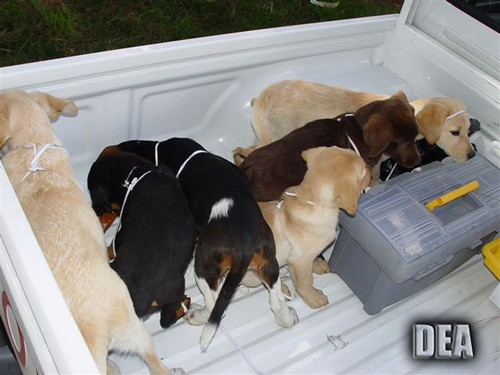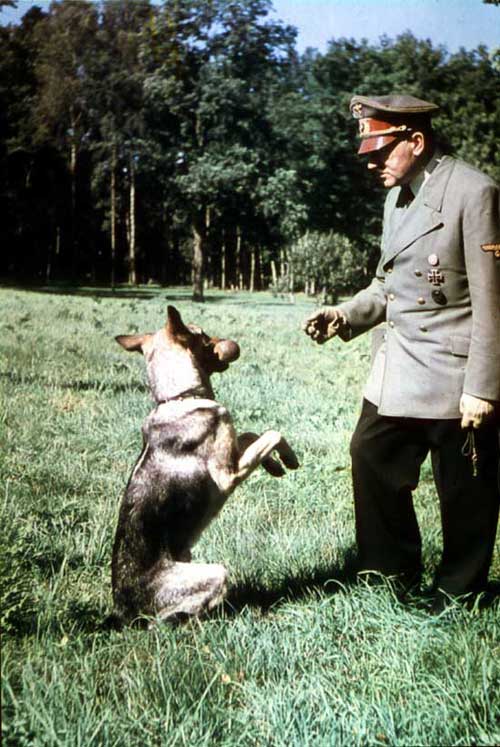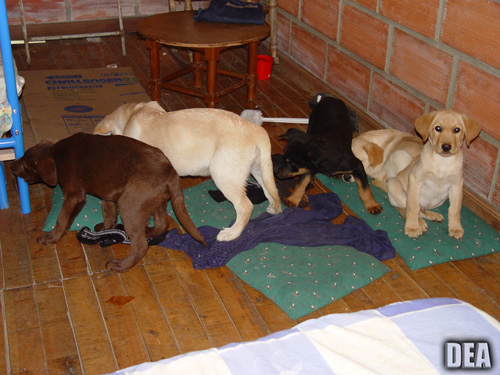NASA beams Beatles’ “Across the Universe” to aliens
February 4, 2008
Words are flying out like
endless rain into a paper cup
They slither while they pass
They slip away across the universe
Pools of sorrow waves of joy
are drifting thorough my open mind
Possessing and caressing meJai guru deva om
Nothing’s gonna change my world
Nothing’s gonna change my world
Nothing’s gonna change my world
Nothing’s gonna change my world
John Lennon’s Across the Universe is being sent out towards Polaris, the North Star and you can watch this happen live and pretend you’re excited! Actually, I think this is one John would’ve enjoyed.
Note: Please forgive us for posting an article that uses the words “harmonic convergence” without irony.
LONDON (Reuters) Mon Feb 4, 2008 3:28pm GMT – An intergalactic celebration of The Beatles is launched on Monday with the beaming of their peace anthem “Across the Universe” into outer space.
The man behind the idea, which marks the 40th anniversary of the recording of the song in 1968, is an avid Beatles fan who has persuaded U.S. space agency NASA to kick off the party and now hopes to convert alien life forms to The Beatles.
“At the moment we are sending up Morse code as a way of contacting aliens,” Martin Lewis told BBC radio. “Maybe we should send them something a little more cheery.”
If all goes according to plan, NASA will transmit the Beatles tune via its deep space network at Midnight British time.
At exactly the same time, fans across the world are being asked to play “Across The Universe” in a bid to “create a harmonic convergence” around planet earth and throughout the universe.
According to a statement from NASA, the transmission will be aimed at the North Star, Polaris, which is 431 light years away from earth. The song will travel across the universe at a speed of 186,000 miles per second.
Former Beatle Paul McCartney, who beamed his first intergalactic concert to the International Space Station in 2005, congratulated NASA and asked them to pass on his regards to anyone else out there.
“Amazing! Well done, NASA!” he said in a statement released by the space agency. “Send my love to the aliens. All the best, Paul.”
Fans can watch the event online via the Web site www.acrosstheuniverseday.com.
(Reporting by Kate Kelland. Editing by Paul Casciato)
Digital Photography Review www.dpreview.com
February 4, 2008
One of the best places on the ‘net to get unbiased information on digital cameras. No place else goes into the level of detail that dpreview does, there’s also a forum for individual user comments.
Before you buy, check your choice, and the alternatives out at dpreview
Loupe.js – Add a Magnifying Glass to Web Images
February 4, 2008
You must check this out. At loupe.netzgesta.de Christian Effenberger has created a javascript-driven magnifying glass to selectively enlarge areas of your image and it is hellacious cool. It’s free for non-commercial and private sites and even if you’re not considering it for your web site, you should definitely check out their demos.
Loupe.js 1.3 allows you to add a loupe (magnifier) to images on your webpages. It uses unobtrusive javascript to keep your code clean. It uses unobtrusive javascript to keep your code clean.
It works in all the major browsers – Mozilla Firefox 1.5+, Opera 9+, Safari and IE6+. On older browsers, it’ll degrade and your visitors won’t notice a thing.
Free Plug-in for InDesign: Autofit Type
February 4, 2008
I did come across an interesting, free plug-in cross-platform (Mac & Windows) called Autofit Type from a firm called Typéfi which might be very useful. Here’s the jist of it:
AutoFit Text Frame options control how a Text Frame is resized when text is inserted during page composition. AutoFit options are always active, this means that frames resize dynamically as content is added or removed from Text Frames. This dynamic resizing prevents text overset. Where AutoFit options are applied on a multiple column Text Frame, text will be balanced across all columns.
This tip is from Design Tools Monthly which is an incredible monthly newsletter that covers the world of design tech in easy-to-read digest format. And they’ve been doing it for 15 years now. They’ve also got a free weekly podcast that’s made up (mostly) of the material you pay a couple of hundred dollars a year to get in print form.
Print Design & Graphic Work
February 3, 2008
Please click on thumbnails for larger images
Logos, Newsletters, Program Books & Posters
Fine Art Prints: Robert Rauschenberg, Larry Rivers, Alex Katz, Will Barnet, LeRoy Neiman
Hitler and Blondie
February 2, 2008
Hitler loved his dog Blondie. A dog trainer had schooled Blondie so well that Hitler was in awe of the precocious canine’s discipline and intelligence. What particularly amazed him — and he delighted in showing this to guests — was how Blondie would sing on command. He’d say, “Sing, Blondie,” and the dog would emit a yodel-like howl. But that is not all. He would then say, “Lower, Blondie,” and his beloved four-legged friend would drop an octave and “sing” in a deep tone “like Zarah Leander.”
All who surrounded Hitler knew of his pride and affection for Blondie. He bragged on the tricks she could perform. He kept her by his side most of the time. She even slept in his bedroom in the bunker. Then, as the Russians closed in, Hitler fed Blondie cyanide. He killed his dog not to spare her from any of the ravages which might follow defeat, not to spare her from hunger or deprivation or disease. Rather, he had begun to suspect that the cyanide Himmler had supplied for Hitler’s own suicide might be fake. So the Fuhrer, who had already sacrificed his entire nation to his own vanity, killed his dog to make sure that his supply of suicide tablets would work when the time came.
— testimony of Traudl Junge from the documentary, Im toten Winkel – Hitlers Sekretärin (Blind Spot – Hitler’s Secretary) 2002, directed by Andre Heller and Othmar Schmiderer. This documentary won top honors at the Berlin International Film Festival and the Chicago International Film Festival.
Are Pet Owner’s Healthier? Maybe Not. . .
February 2, 2008
Fuzzy Science
By January W. Payne
Washington Post Staff Writer
Tuesday, January 16, 2007
People spend billions annually on their pets — feeding, grooming, even clothing their animals. They play with them, sleep with them, approve surgery for them and mourn for them, much as they would for people.
But does owning a pet make people healthier? Popular assumptions notwithstanding, science is still out on that question.
A new study out of Finland suggests the answer may be no. Pet owners, the study finds, smoke cigarettes more but drink alcohol less than those without pets. They also have a higher body mass index (BMI), a ratio of weight relative to height. Pet owners spend slightly less time playing organized sports than non-owners but take part more often in such activities as hunting, fishing and boating. Pet owners are also less likely to report having good health than non-owners.
The findings point in a different direction from many previous studies, which have suggested that pet owners enjoy such health advantages as lower cholesterol, triglyceride and blood pressure than non-owners, even after accounting for such variables as exercise. Previous studies also have shown that owning pets may relieve feelings of loneliness and encourage pet owners to exercise more, spend more time outdoors and socialize more, according to the Centers for Disease Control and Prevention.
But this area of research is filled with inconsistencies, with one study’s findings often contradicting another’s.
And because many of the studies are of poor quality and not much funding goes to finding new answers, said James Serpell, director of the Center for the Interaction of Animals and Society at the University of Pennsylvania School of Veterinary Medicine, “much of this is speculation”– meaning more research needs to be done to find definitive answers. What seems most promising, he said, is the idea that pets offer social support — something that can affect how people deal with stress, which is known to impact health.
“At some level it seems obvious to me [that pets are] providing exactly the same types of support as” other social networks, including family and friends, Serpell said. Still, “while we like our friends and our family, they’re likely a source of conflict, but most animals are not. Most animals give but don’t take much.”
Gold-standard evidence of pets’ benefits to human physical and mental well-being may be scant, but examples of their use for health purposes are not. For decades, household animals have been used to assist patients with medical conditions such as blindness or seizures, as well as to relieve depression and social isolation. But when the National Institutes of Health last thoroughly explored the health benefits of pet ownership 20 years ago, its experts hedged.
“Persuasive evidence was presented to conclude that pets are likely to be medically beneficial to some people’s health,” they wrote in a consensus statement. “However, much is to be learned about many of these relationships before broad generalizations of medical benefit can be made.” No comparable group of experts has since been convened to reexamine the question.
The health differences found between pet owners and non-owners in the Finnish study, published in December in the online medical journal PLoS ONE, were small and may not apply to Americans, the authors say. What’s more, the study found a “difference only in the proportions of people reporting ‘good perceived health’ and not in the proportion reporting ‘bad health,’ ” said lead study author Leena Koivusilta, a researcher at the University of Turku, in an e-mail interview.
“We wanted to report the slight differences” between the pet owners and non-owners who both reported good perceived health “but, at the same time, to make sure that no ‘larger than life’ interpretations could be made,” Koivusilta said.
Her analysis was based on a survey of more than 21,000 Finnish people who responded to a questionnaire as part of a 15-year health and social support study. Eighty percent of those who had pets reported good perceived health, compared with 82 percent of those without pets. Twenty-eight percent of pet owners smoked regularly, compared with 23 percent of non-owners; 33 percent of pet owners smoked occasionally, compared with 32 percent of non-owners; and 39 percent didn’t smoke, compared with 45 percent of non-owners.
But overall, pet owners in the study also were less educated than non-owners, suggesting that any health benefits observed might be due to socioeconomic status rather than pet ownership, the researchers said.
“The grand message of the study could be that pets provide us all with a vast potential for health promotion as has been shown previously,” Koivusilta said. “Walking your dog makes you feel better, for your sake and for your hairy friend’s sake, and perhaps also helps you to lose some weight.”
Some research has suggested that pets offer social support that acts as a stress reliever, which affects health. One such study, published in 2001 in the journal Hypertension, found that pet owners had lower blood pressure readings when undergoing mental stress than people who did not own pets.
A 1995 American Journal of Cardiology study reported that dog ownership by men was associated with decreased risk of death within one year of a heart attack, compared with those who didn’t own dogs. A 1999 Journal of the American Geriatric Society study found that men and women who owned a pet scored better on a scale that measures the ability to complete daily tasks — such as bathing and dressing themselves, preparing food and walking several blocks — than peers who didn’t own a pet.
In 2005 BMJ (formerly the British Medical Journal) published a review examining studies that helped popularize the idea that pet ownership positively affects human health. The review found that while some studies reported pet-owning benefits such as better physical and psychological well-being in the elderly and reduced risk of cardiovascular disease, many later studies failed to confirm these findings.
Given this inconsistency, the BMJ review suggested that researchers focus less on whether owning a pet offers measurable health benefits and instead on how pets affect individual quality of life and how humans are affected by a pet’s death.
Future research also should tackle more specific questions, gleaned from what’s already known. “If pets are another form of social support, [then] we should start to ask more directed kinds of questions about the kinds of people who would be more likely to benefit from having a pet — maybe the kinds of people who don’t have a strong social support network,” Serpell said.
Heroin Puppies
February 2, 2008
Heroin Traffickers Used Puppies to Smuggle Drugs Medellin-based Organization Surgically Implanted Packets of Heroin in Pure-Bred Dogs
Feb. 3, 2006: The DEA arrested 22 heroin traffickers based out of Medellin, Colombia, who used puppies to smuggle drugs. The drug traffickers surgically implanted packets of liquid heroin into purebred dogs. All of the puppies who survived were adopted by local families and are still doing well today.
DEA has received numerous calls concerning the fate of the puppies who survived the horrific deeds of drug smugglers. Many of the callers expressed interest in adopting the dogs. We are pleased to report that all of the puppies have been taken in by Columbian families and are in great health. The public reaction to this story has been overwhelming. We thank you all for your interest.
— from the DEA’s website

PETA Killed 97 Percent of ‘Companion Animals’ in 2006
February 2, 2008
Death toll up to 17,400; overdue report describes PETA’s deadliest year ever
WASHINGTON, Jan. 10, 2008 /PRNewswire-USNewswire/ — An official report from People for The Ethical Treatment of Animals (PETA), submitted nine months after a Virginia government agency’s deadline, shows that the animal rights group put to death more than 97 percent of the dogs, cats, and other pets it took in for adoption in 2006. During that year, the well-known animal rights group managed to find adoptive homes for just 12 pets. The nonprofit Center for Consumer Freedom (CCF) is calling on PETA to either end its hypocritical angel-of-death program, or stop its senseless condemnation of Americans who believe it’s perfectly ethical to use animals for food, clothing, and critical medical research.
Not counting animals PETA held only temporarily in its spay-neuter program, the organization took in 3,061 “companion animals” in 2006, of which it killed 2,981. According to Virginia’s Department of Agriculture and Consumer Services (VDACS), the average euthanasia rate for humane societies in the state was just 34.7 percent in 2006. PETA killed 97.4 percent of the animals it took in. The organization filed its 2006 report this month, nine months after the VDACS deadline of March 31, 2007.
“Pet lovers should be outraged,” said CCF Director of Research David Martosko. “There are thousands of worthwhile animal shelters that deserve Americans’ support. PETA is not one of them.”
In courtroom testimony last year, a PETA manager acknowledged that her organization maintains a large walk-in freezer for storing dead animals, and that PETA contracts with a Virginia cremation service to dispose of the bodies. In that trial, two PETA employees were convicted of dumping dead animals in a rural North Carolina trash dumpster.
Today in Southampton County, Virginia, another PETA employee will face felony charges in a dog-napping case. Andrea Florence Benoit Harris was arrested in late 2006 for allegedly abducting a hunting dog and attempting to transport it to PETA’s Norfolk headquarters.
“PETA raised over $30 million last year,” Martosko added, “and it’s using that money to kill the only flesh-and-blood animals its employees actually see. The scale of PETA’s hypocrisy is simply staggering.”
To speak with a spokesman, contact Tim Miller at 202-463-7112.
For more information about PETA’s massive euthanasia program, visit http://www.PetaKillsAnimals.com
http://www.consumerfreedom.com/
Balthasar and the Night Janitor
February 2, 2008
“Dogs are even able in old age to develop lasting and deep attachments if their love and bonding are reciprocated. . .One very sweet mutt, Balthasar, escaped from his new master three times and came back to us at the university, and so we were stuck with him. We thought he bonded with us so strongly that he was unable to develop new attachments. Thus, Balthasar became the watchdog at the Göd research Station, which made everybody, including him, very happy. One day, when he was twelve years old and had to be considered a rather old dog, the research station hired an elderly person as night janitor and superintendent. One day I was looking for Balthasar in vain. My colleagues told me that recently he started to leave in the mornings with the night janitor, only to return to ‘job’ at night. I learned from the group that Balthasar and the old janitor got to like each other quite a bit. “Just think,” they said, “they sleep together and he even buys Balthasar hot dogs.” Unfortunately, this relationship lasted only a few months, because the night janitor became ill, had to be hospitalized, and eventually died. In spite of this, Balthasar would disappear from time to time, particularly in the mornings. We tracked down what he was doing during his absences, and found that he would cross the busy highway, got to his adoptive master’s old house in the village, and sit in front of it for hours.”
– from If Dogs Could Talk; Exploring the Canine Mind by Vilmos Csányi, translated by Richard E. Quandt, North Point Press, Farrar, Straus and Giroux, New York, NY, 2005. Originally published in 2000 by Vince Kiadó Kft., Hungary






